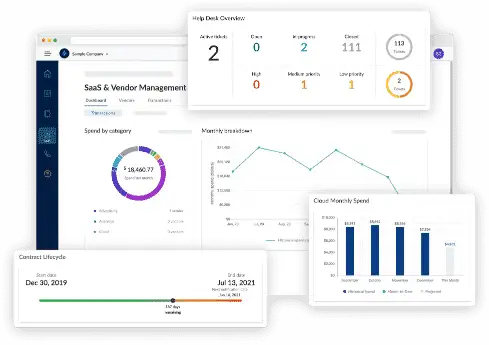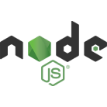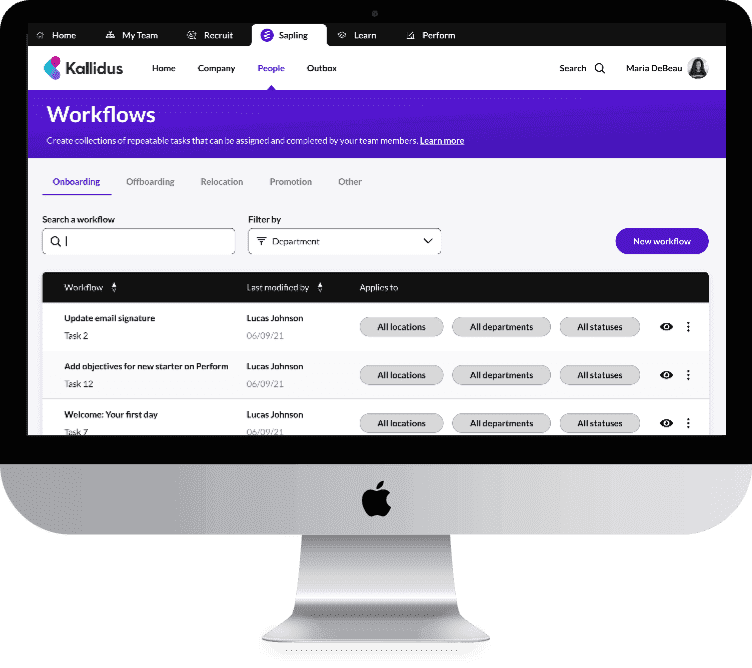MongoDB is a great platform for building data driven applications. Moreover, 70% of the Fortune 100 companies use MongoDB for their most applications. Therefore, developers are moving away from more flexible options.
Its NoSQL document database is also intended to be easily developed and scaled. MongoDB also saves data in documents that resemble JSON. Hence, that means you can start building right away without worrying about rigid schemas.
So, in this guide, we will discuss what MongoDB and how its architecture works. Also, we will explore how you can set it up in a step by step approach.
What is MongoDB?
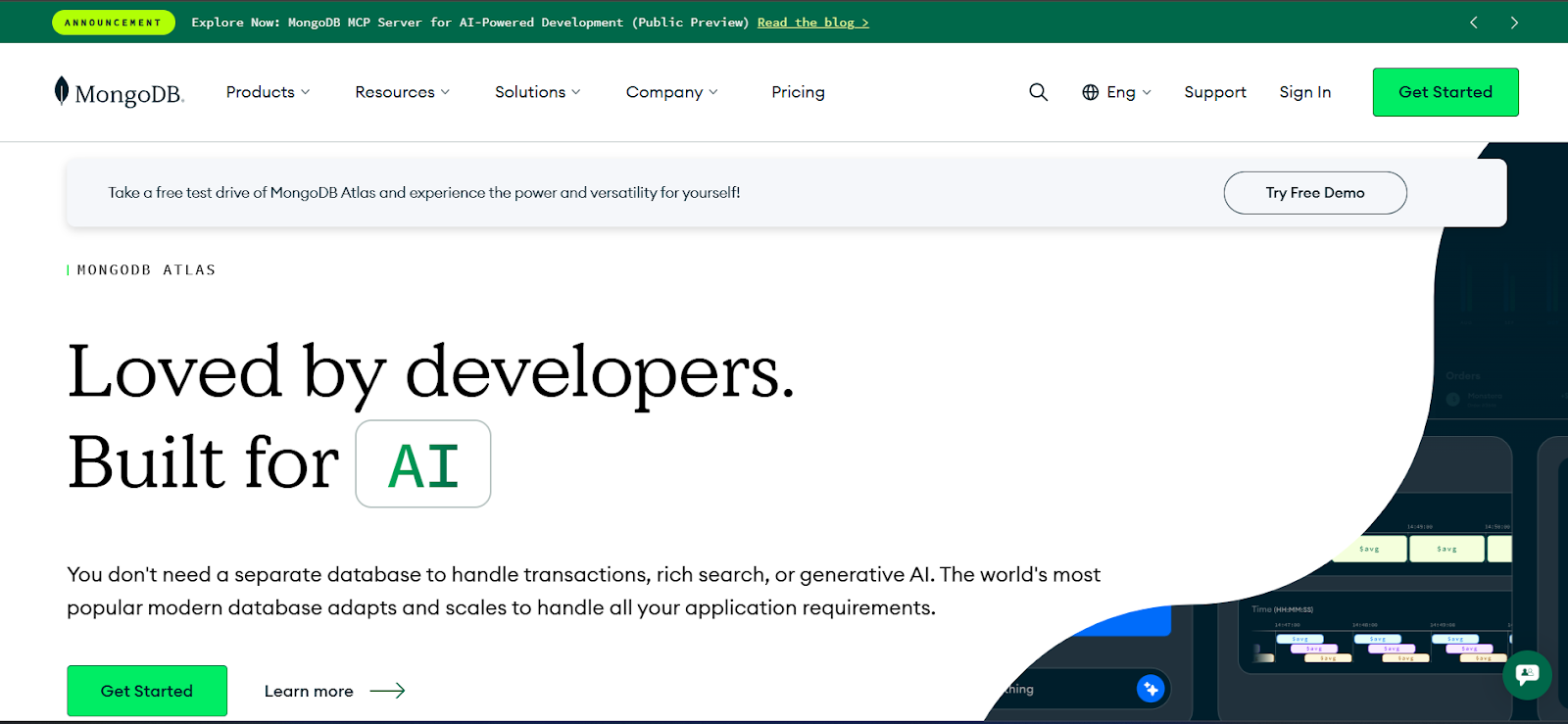
MongoDB is a document oriented, NoSQL database that provides excellent performance. Also, it can easily manage massive amounts of data. Furthermore, MongoDB uses a schemaless data model where you can store information in documents using a format similar to JSON, known as Binary JSON.
In MongoDB, every document is a self contained data unit made up of field and value pairs, which can be strings. Furthermore, without needing intricate migrations, this method enables MongoDB to support a broad variety of data architectures throughout time.
Some of the aspects of MongoDB include:
Document Based Structure
The document, which unifies linked data into a single structure, is the fundamental unit of MongoDB. Additionally, this style is far more similar to how programmers organize data in code. Hence, this makes it intuitive and developer friendly.
Collections Instead of Tables
Instead of tables, MongoDB organizes documents into collections. Also, each collection holds multiple documents, which can be similar but don’t need to have the exact same structure. Therefore, this schema flexibility supports quick development and agile workflows.
Dynamic Schema
You can add additional fields to MongoDB as it doesn’t require a specified schema. Additionally, you may switch data types without affecting the program as a whole. For startups or any other project that moves quickly and where the data model may change often, this is perfect.
High Availability
Sharding and replica sets are supported by MongoDB. This makes it an excellent option for apps that must provide massive amounts of data to millions of consumers around the globe.
Cross Platform
MongoDB is open source and cross platform. Additionally, it works with other Linux distributions and Windows. Additionally, MongoDB’s open source nature has fostered a sizable community. Moreover, it also provides a thriving integration ecosystem.
Why Should You Use MongoDB?

Developer Friendly Syntax
MongoDB is quite developer friendly, especially for people who know JavaScript already. Because MongoDB stores data in BSON format, the syntax will be simple and natural for developers working in JavaScript environments, such as Node. Because of this, full stack JavaScript developers find it to be a perfect fit. Applications developed with MERN or MEAN Stacks are particularly affected by this.
Scalability by Design
Scalability is a top reason developers and organizations choose MongoDB. It also uses a method known as sharding to enable horizontal scaling. Because of sharding, MongoDB can distribute large databases over several servers. As a result, higher loads may be managed without affecting functionality. In addition to sharding, MongoDB features replica sets, which ensure data redundancy and high availability.
Querying and Aggregation
MongoDB offers a rich set of query capabilities that go further than simple key value lockups. Also, you can perform complex queries using comparison operators and logical operators. Also, for deeper data analysis and transformation, MongoDB provides a reliable aggregation framework. Furthermore, you may filter and restructure data inside the database itself using the aggregation pipeline. As a result, application logic no longer needs to manage huge datasets.
Performance and Speed
Performance is another area where MongoDB excels. It is also designed for speed, with in memory storage capabilities and efficient read and write operations. In comparison to conventional relational databases, MongoDB also enables you to incorporate relevant data in a single document, resulting in quicker access times.
Also, Indexing is important in MongoDB’s performance as well; developers can create single field and geospatial indexes to optimize query speed. Hence, these performance features make MongoDB a suitable choice for high traffic applications that require real time interactions and live data feeds.
Cloud Integration with MongoDB Atlas
For developers who prefer not to manage cloud infrastructure, MongoDB offers a fully managed cloud service called MongoDB Atlas. With Atlas, you can deploy and manage MongoDB clusters across major cloud providers. It includes built in tools for monitoring and backups, along with advanced security features like encryption and IP whitelisting. Also, the user interface makes it easy to spin up a cluster in minutes, while the generous free tier makes it an excellent option for prototyping and small applications.
Ecosystem and Community
A thriving ecosystem and a sizable, active development community support MongoDB. Therefore, there is a tool to suit your needs, whether you want cloud tools like Realm for mobile synchronization or an ORM like Mongoose. Moreover, MongoDB also offers extensive documentation and official learning resources through MongoDB University. This strong community ensures continuous learning and troubleshooting opportunities.
How to Set up MongoDB?

Install MongoDB Locally
If you want total control over the database server then you should instal MongoDB locally. Downloading the preferred version from the official MongoDB website will allow you to install MongoDB.
After installation, you need to make sure the MongoDB server is running. Along with other important tasks, this function manages data storage. Using the MongoDB Shell you can start interacting with your database.
Using MongoDB Atlas
You only need to register for a free account on the MongoDB Atlas website in order to utilize it. You may launch a free tier cluster, which provides you with access to a basic MongoDB server housed in the cloud, after logging in and creating a new project. Additionally, you may choose the cluster’s cloud provider and location. This ensures it’s close to your users for optimal performance.
Once you deploy your cluster, Atlas provides you with a connection string. Hence, you can use in applications or MongoDB Compass to connect to the cloud database. You will also be prompted to create a database account, Next, you will be asked to whitelist your IP address in order to increase security.
You may manage your databases using the online dashboard that comes it. You can also configure features like auto scaling and keep an eye on performance indicators. Since everything is managed through a user friendly interface, even those with limited technical background can launch a production ready database within minutes.
Also, Atlas eliminates the need for server maintenance. It is therefore perfect for remote projects and production settings. Additionally, it offers sophisticated security features including access control. Businesses that must abide by data protection laws will find this very helpful.
Selecting the Right Setup
Both local and cloud setups have their own advantages. Therefore, installing it locally might be a wonderful place to start if you are creating apps that don’t need remote access. Additionally, it enables complete customization and provides better insight into the database’s operation. On the other side, Atlas provides a cutting edge and effective solution that eliminates a large portion of the operational overhead if you want rapid deployment and automatic scaling.
Best Practices for MongoDB
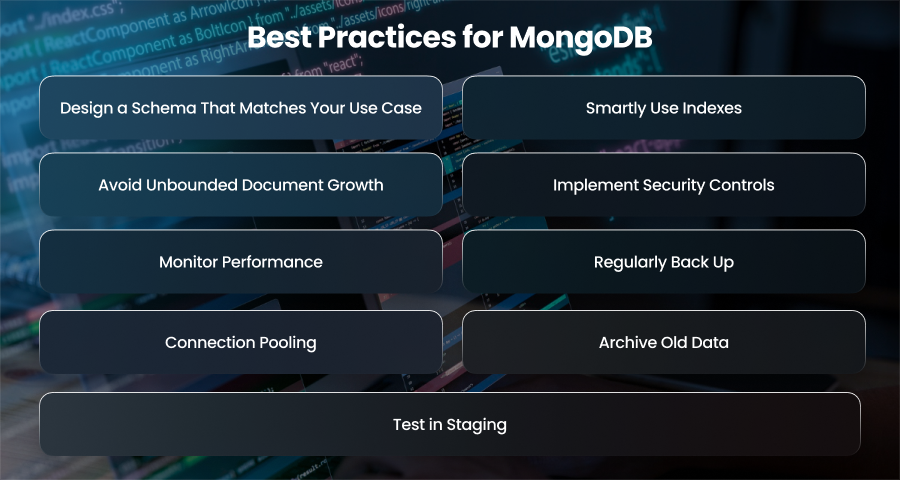
Design a Schema That Matches Your Use Case
Altough MongoDB allows schema less documents, that doesn’t mean you should design you data model without planning. Organizing your documents according to how your application reads and publishes data is one of the best practices.
For example, incorporating user profiles, settings, and preferences into a single document might eliminate the need for many queries if your application often receives such information. On the other hand, for data that grows indefinitely, it’s better to reference or separate it into different collections to avoid overly large documents.
Smartly Use Indexes
For query speed, indexes are essential, particularly as your data collection expands. Thus, MongoDB is compatible with a wide range of indexes and compounds. Conversely, poor index utilization may lead to large memory usage and slow write performance.
Therefore, fields that are often utilized in search or filtering operations should have indexes created for them. In order to eliminate unnecessary indexes, it’s also critical to routinely assess index utilization using MongoDB’s integrated monitoring tools. Also, compound indexes can be particularly useful when used thoughtfully.
Avoid Unbounded Document Growth
There is a document size limit in MongoDB. Therefore, excessive growth in document size can lead to performance issues. Also, if you are storing arrays or nested data that continuously grows, you should consider using separate collections instead of embedding everything in a single document.
Additionally, splitting large and unbounded data into manageable and referenced documents helps keep your database performant. Moreover, this approach prevents situations where a single document becomes a bottleneck or exceeds MongoDB’s size constraints. This can result in failed writes and degraded performance.
Implement Security Controls
It is crucial to secure your MongoDB installation, particularly if you are working in a production setting. Moreover, it always enforce authentication and authorization to control access to your database. Also, MongoDB provides role based access control which can allow you to define user roles with specific permissions.
Furthermore, encryption may be applied to data that is in transit as well as at rest. Additionally, you can use encrypted storage engines to ensure the security of data saved. You should also regularly update your MongoDB version to benefit from security patches.
Monitor Performance
MongoDB offers several tools like Database Profiler to help you analyze query performance. Therefore, you should track metrics such as slow queries and memory usage. Also, you can track read/write throughput and replication lag. Furthermore, you should use this information to optimize queries or adjust schemas. Also, consistent monitoring helps you spot issues early before they impact your users or cause data inconsistencies.
Regularly Back Up
In the event that your infrastructure fails, backups are your safety net. Maintaining a consistent backup procedure is crucial, regardless of whether Mongo is being operated locally or on the cloud.
Additionally, you can automate backups with only a few clicks if you’re using Atlas. Furthermore, for self hosted setups, you may want to consider using tools like mongodump.
Connection Pooling
Making effective use of connection pooling may significantly increase performance when developing high concurrency apps. With connection pooling, a pool of existing connections between your apps and the database are reused rather than being opened and closed for every action.
Connection pooling is supported by default by the majority of MongoDB drivers. However, you may get notable resource use benefits by adjusting the pool’s size according to the workload and concurrency level of your application.
Archive Old Data
Your database will fill up with a lot of data as your application expands, some of which will be irrelevant. One efficient technique to preserve speed and save storage expenses is to archive or remove outdated data.
Also, this keeps your collections lean and resources optimized. Moreover, you can implement these processes manually or automate them with scripts.
Test in Staging
Before implementing schema modifications and deploying indexes, you should always test in the staging environment. This method also reduces risk and guarantees that upgrades won’t interfere with your program. By creating a staging environment that closely resembles your production system, you can monitor affects and identify mistakes.
Final Words
For modern applications, MongoDB provides exceptional performance and flexibility. It is perfect for both novices and experts due to its comprehensive features and document based structure. Also, you should follow all the best practices to build efficient and secure solutions using MongoDB.






